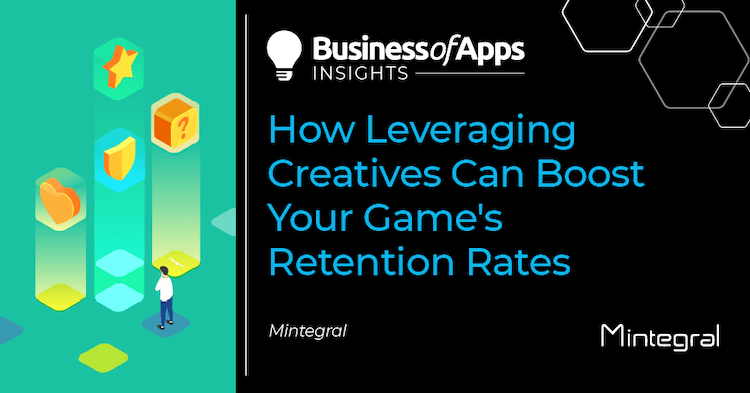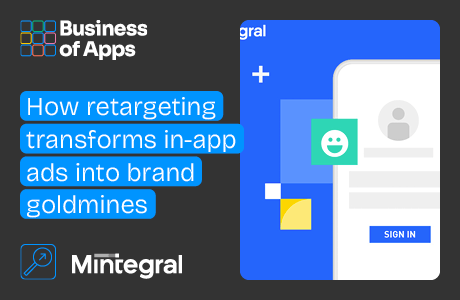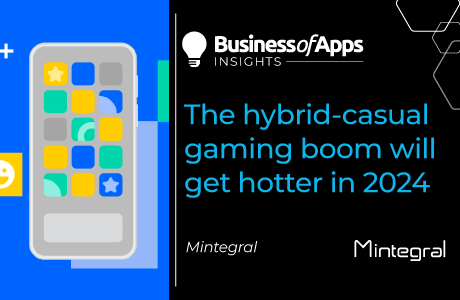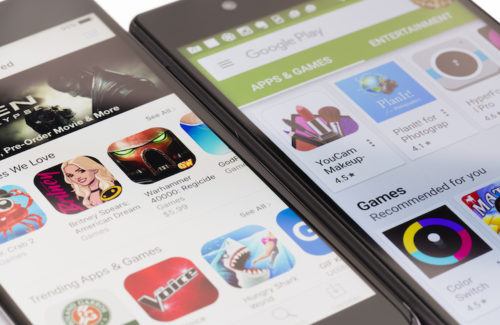
If there’s one thing we’ve learned since the start of the pandemic is that users have developed a large appetite for mobile gaming. The last 14 months have been eventful for both the mobile gaming industry and the world at large. The lockdowns resulted in mobile users jumping on the gaming bandwagon, with hypercasual and casual titles reaping most of the rewards. Time spent in-app skyrocketed and so naturally, developers looked to capitalize on this by deploying their best retention strategies to keep users engaged and wanting more.
Retention rates between Android vs. iOS have recovered since the pandemic with the top Android hypercasual games Day 7 retention hovering around 16% and the top iOS hypercasual games Day 7 retention hovering around 18.5%. With this in mind, it’s important to understand how ad formats, too, can play a part in player retention. Playable ads, for instance, see a much higher retention rate than some of the more traditional ad formats. This is likely due to the ability to track in-ad behavior on Android and leverage A/B testing for better engagement and conversion. Playable ads serve as a gateway to the game where other ad formats cannot. Playing a highly engaging snippet of the game reduces Day 0 and Day 1 retention dramatically and ultimately helps advertisers maximize their limited marketing budgets.
Don’t stop testing
For obvious reasons, A/B testing is going to be part of any strategy looking to maximize in-game ad revenue. This is even more important during your Day 1 – 7 retention strategy as that’s where the majority of hypercasual gamers fall. Here, developers must be careful on how they approach their monetization strategy.
Day 1 retention rates have a significant impact on hyper-casual game monetization. First impressions matter and utilizing interactive ad formats here tend to provide a better user experience, which plays a crucial role in retaining users early on. In the US, Day 1 retention rates for games that utilize playable or video ads is 5% – 9% compared to Japan, South Korea and Southeast Asia where games with playable ads is 10% – 13% higher than that of common video ads. Simply put, playable ads help to keep the user engaged and are seen as extremely accessible to the casual gamer.
Playable ads also serve as a helpful tool in shortening game tutorials. Users are often scared off if the in-game tutorial presents too much text or is too long. Playables give the user the ability to get a feel for the game mechanics and interact without being intrusive.
Long-term engagement strategies
If you manage to engage users past Day 7, this is where you’ll see a large portion of a developer’s revenue. Engagement from Day 7 – Day 30 is where game loyalty is developed and typically means your gaming experience is hitting the mark. It is important to keep these users satisfied while continuing to monetize and this is where strategic ad placement can be key to long-term success.
Developing loyalty with these user cohorts can be as easy as deploying rewarded video. A Rewarded video gives an incentive to the user and by identifying where users drop off, this can be a powerful retention strategy to leverage. So powerful, in fact, that it’s common for developers to be asked by players to reintroduce rewarded video ads. It’s this sort of response, which highlights how valuable rewarded video ads are. Loyal players view them positively and are part of a process that makes games more enjoyable to play.
Look for new, innovative ad formats
The mobile gaming market develops at an incredible speed and developers are constantly looking for new, innovative formats that capture users’ attention. And although rewarded video continues to see results, it has been around for quite some time. This has led to advertisers being introduced to significant upgrades to video content through 3D creatives. Unreal Engine 4, for example, has revolutionized the speed at which high-quality video content can be created and iterated upon. The latter being extremely important as granular data from the video helps advertisers significantly improve their A/B testing pool. Unreal Engine 4 ads have become more commonplace in countries such as Japan, South Korea, and China where users are hip to sophisticated role-playing games and MMORPG’s. These games provide long session length and developed plots with a high degree of storytelling. Unreal Engine 4 ads have been well suited to storytelling given their attention to detail and ability to match the quality of the actual gameplay.
Conclusion
Finding the right format and using the right creatives at the right time can do wonders for retention rates in 2021 and beyond. With playable ads showing better results across the board, they can be the key to strong retention rates as the world slowly goes back to some version of “normal”. Finding new or better ways to keep players engaged has the potential to decide which developers will continue their success in a post-COVID world. There is always nuance in the mobile gaming market, especially as the industry develops and grows. Each genre is better suited to specific ad formats and placements and best matching them often comes down to your understanding of the market and region you are focusing on.










